Reintroduction of captive-bred animals
to the wild: Is the modern ark afloat?
by Rob Laidlaw
Reprinted from
Who Cares for Planet Earth? The Con in Conservation
The Alpha Press, 2001.
The Hustain Nuru region of Mongolia’s Chentai Mountains is one of the country’s most pristine wild areas. Valleys and slopes harbour steppe vegetation such as fescue, brome grass and feathergrasses, while birch woods grow in the upper elevations of this relatively low lying mountainous region. A diverse range of wild fauna including marmots, lemmings, red deer, wild sheep, polecats, Pallas cat, lynx and wolves call the Hustain Nuru home.
In an effort to conserve the biodiversity of this region, the Mongolian government initiated several measures to minimize human impact in the area including a prohibition on hunting and the grazing of domestic livestock. They were preparing for the return of one of Mongolia’s largest native mammal species, the Przewlaski’s horse, a low-slung, stocky equid with a thick neck, bristly erect mane and dorsal stripe.
In June 1992, sixteen captive-born Przewalski’s horses, one of the last truly extant wild horse’s of modern times, arrived in the Mongolian capital city of Ulan Bator. The horses were quickly transported by truck to Hustain Nuru, approximately 115 kilometers distant, where they were kept in 45 – 65 hectare enclosures: step one in their preparation for life in the wild.
Almost a year earlier, and halfway around the world, the much smaller, but equally famous black-footed ferret was taking its first tentative step back onto the wild short-grass prairie of Wyoming in the United States.
Short and mid-grass prairie once covered an enormous expanse of North America from Mexico to Canada, providing a suitable environment for untold millions of prairie dogs and hundreds of thousands of black-footed ferrets, one of their principle predators. Yet in a little more than a century, human development of the prairies and a widespread prairie dog eradication campaign resulted in the virtual elimination of black-footed ferrets.
The Wyoming project involved 49 cage-raised ferrets who were released with little preparation. Whether or not they could survive was unknown at the time.
Reintroduction of captive-bred animals to the wild is an appealing concept that would seem, at first glance, to be a viable solution to the many problems facing endangered wildlife today.
In printed literature, video and film, zoos around the world have capitalized on this appeal. Proclaiming their commitment to the conservation of wildlife, they proudly publicize their participation in captive propagation programs and their support for the reintroduction of endangered species back into the wild. As part of the "modern ark," they claim their efforts are saving endangered species from extinction and restoring wild animal populations.
But what are the realities of captive breeding and reintroduction? Does the zoo-going public really have an understanding of what they are supporting? Are zoos and aquariums deluding both themselves and their visitors? Do they really believe they have the answer? Are they creating a dangerous complacency, leading the public to believe that zoos are taking care of the problems faced by endangered wildlife?
According to Welfare Guidelines For The Re-Introduction Of Captive Bred Mammals To The Wild (1992), published by the Universities Federation for Animal Welfare (UFAW), reintroduction is defined as "…the release of animals into areas in their historical ranges where they have become extinct in the wild." The 1987 International Union for the Conservation of Nature (IUCN) position statement, Translocation of Living Organisms, provides the following definition: "Reintroduction of an organism, which is the intentional movement of an organism into a part of its native range from which it disappeared or became extirpated in historic times as a result of human activity or natural catastrophe."
While several slightly different definitions can be found in the literature, for the purposes of this discussion, reintroduction will be defined as the release of captive-bred or wild-caught animals into areas they no
longer inhabit or in which their numbers have been seriously depleted within their historical range.
Rationales for reintroduction include the restoration of a more natural ecosystem balance through the introduction of extirpated species, to bolster an existing wildlife population by increasing numbers, and increasing their vitality through the introduction of new genetic material.
Introduction, as opposed to reintroduction, involves the release of animals into areas they have not inhabited in the past. Many introductions, both intentional and accidental have had detrimental consequences to native wildlife and habitat. Examples include the introduction of rats and domesticated cats to island ecosystems around the world resulting in the decline, extirpation, or extinction of many endemic island wildlife species. Starlings, originally released in the 1800s, now number in the millions in North America increasing competition for nesting sites with native bird species such as the eastern bluebird. Zebra mussels in the North American great lakes, rice eels in the waterways of the American southeast, wild pigs in Hawaii, rabbits in Australia, and exotic ungulates in New Zealand are just a few of the many thousands of examples of introduced animals wreaking havoc with local species.
Translocation, in some cases referred to as reintroduction, is the transfer of animals from one location to another. This process is often carried out to reestablish a species in an area it once inhabited by drawing individuals from a stable, wild population for translocation to another location within its historic range, or to enhance numbers of an existing wild population with specimens from a separate population. Occasionally, translocation has a recreational or commercial incentive such as increasing the number of animals available for human harvest.
While there is little dispute that captive propagation and reintroduction, within a very narrow set of parameters, can be a valid component of an overall conservation strategy, the inherent difficulties of reintroduction preclude it as a tool in most instances. There is a great deal of dispute about the role of zoos in reintroduction. So far, zoos have had only a modest, and in some cases insignificant, involvement in reintroduction efforts, yet, as an industry, they have grossly overstated their own importance in this area, often for self-serving reasons.
Many of the reintroduction program descriptions that follow relate to the initiatives of a few of the "better-known" zoos, as well as to those programs administered by various governmental wildlife agencies. In
describing and debating the merits of those efforts, the reader should be aware that a significant portion, possibly as high as 95% or more, of the worldwide zoo industry does not participate in, or make any attempt to participate in, recognized captive propagation and reintroduction initiatives.
While many established zoos pay only token attention to conservation, other zoos and zoo-type facilities do even less. In Canada, the United States and many other countries around the world, slum zoos, substandard wildlife exhibits, private menageries, and specialty displays abound. In some regions these facilities comprise a significant percentage, sometimes 90% or more, of the "zoo industry." Despite the fact that many "reputable" zoos try to distance themselves from these types of facilities, they exist nonetheless and should not be ignored in discussions of zoo industry activities. Looking at only the top 5 – 10% of zoos provides an overly sanitized view of the real situation.
With few exceptions, zoos around the world trumpet the virtues of captive propagation and reintroduction programs. Yet few actually participate in them in a substantive way. According to David Hancocks, former executive director of the Arizona-Sonora Desert Museum, "There is a commonly held misconception that zoos are not only saving wild animals from extinction but also reintroducing them to their wild habitats. The confusion stems from many sources, all of them zoo-based….In reality, most zoos have had no contact of any kind with any reintroduction program."
Even many of the high profile Species Survival Plan (SSP) breeding programs administered by the American Zoo and Aquarium Association (AZA), and their counterpart programs in other parts of the world, have no mechanism for the return of animals to the wild. And virtually all of these programs include the maintenance of captive populations in perpetuity.
"Reintroduction is not the primary reason for captive breeding," says Michael Hutchins, director of conservation and science for the American Zoo and Aquarium Association. Maintaining captive populations of charismatic animals or "flagship species" so that zoos can raise money for conservation projects in their country of origin is one of the purposes of captive propagation.
Yet many members of the public firmly believe that the goal of zoo-based captive breeding is to replenish wild animal populations and that once that is done, there will be no reason to confine those animals further.
Contrary to popular belief, most reintroduction programs have not been initiated by zoos. Instead, they are the initiatives of government wildlife agencies, particularly in regions where these agencies are better-staffed and funded, such as North America, Europe and Australia.
Many critics agree that zoos have played a legitimate, albeit small, role in reintroduction efforts, but they question the level of involvement given the resources at hand. The collective annual budget of zoos worldwide is estimated to be in the neighbourhood of 4 – 6 billion dollars.
Benjamin Beck, Associate Director of Biological Programs at the National Zoological Park in Washington, D.C., was able to identify only 129 reintroduction programs, since the turn of the century, in which the origin of the animals could be determined. Despite the preponderance of zoos, numbering in the thousands worldwide, zoo-bred animals have been involved in only 76 (59%) of the programs he identified. While stating his support for this contribution, Beck says, "Nevertheless, it does not appear that zoos are the primary proponents, animal providers, funders, or managers of reintroduction programs."
In certain cases, the motivation behind zoos’ participation in captive propagation and reintroduction is suspect as well. As societal attitudes change, zoos increasingly become the targets of criticism, especially with regard to animal welfare and conservation. Are some zoos jumping on the "conservation bandwagon" in response to critics?
Many Canadian roadside zoo operators, responding to concerns about substandard conditions, erroneously claim they are involved in saving endangered species through captive breeding. Further, they state that the progeny of their animals can be, or will be, put back into the wild. Yet few of these facilities are involved in recognized captive propagation or reintroduction initiatives, and many do not even know such organized programs exist. Even if they did, they typically don’t have the resources or expertise to participate. These zoos and others like them are trying to exploit public interest in "conservation" for self-serving purposes.
Reintroduction programs for most species are enormously complex and expensive. Even if zoos wanted to participate as full and equal partners, few have the material or financial capacity to do so. Collectively, zoos worldwide have enormous resources at hand, but little seems to actually be available for conservation work. For this reason, most zoos are peripheral players. They participate in zoo-
based captive propagation initiatives in the hope that they have relevance to reintroduction efforts and conservation.
Most reintroduction programs are complicated and expensive, involving a multi-disciplinary approach to problem solving. Long-term financial commitment, active collaboration with a broad range of public and private agencies, and an extended period of post-release follow-up, in some cases for many years, are critical to their success. This is beyond the ability of all but the best-funded zoos or zoo consortiums.
Reintroduction is not a viable strategy for the disposition of most captive animals. In fact, if it is not done properly, it can be counterproductive. In Wild Mammals In Captivity, Principles and Techniques, Devra Kleiman states, "…attempts to reintroduce a species, if poorly conceived or implemented, may actually obscure the conservation issues that led to the decline of the species in the first place – and thus may detract from, rather than add to, a species chances of survival. (IUCN 1987)."
In addition to the difficulties of gathering sufficient support for reintroduction programs, other obstacles exist. For the purposes of this discussion, these additional factors have been divided into two broad categories - 1) environmental/biological, and 2) human-caused.
In determining whether or not a reintroduction program is a viable conservation strategy, certain criteria must be satisfied. Environmental, biological and human-based factors may all impact reintroduction efforts. Human-based factors are discussed in the next section of this chapter.
Environmental/Biological Factors Affecting Reintroduction
One criterion that must be satisfied is the availability of suitable habitat. In order to determine whether or not a potential release site is suitable, it must be thoroughly studied and analysed. Do the conditions that threatened the original population or its habitat still exist? If they do, can their impact be mitigated sufficiently for reintroduction to succeed?
Environmental changes (i.e., altered weather patterns, modification of forest type, reduction in water levels, human development, etc.) which may impact reintroduction efforts may have occurred at potential release sites. The longer the release candidate has been absent from the site, the greater the likelihood that environmental changes have occurred. If a species has been absent from its original habitat for a relatively brief period, changes that have occurred may be minor and
inconsequential. However, for a species that has not been extant in its historical range for decades or centuries, conditions may have changed substantially. For example, if the survival of a bird species was dependent on intact stands of old growth forest, it wouldn’t do any good to introduce individuals of that species into newer second or third growth forest areas.
The World Zoo Conservation Strategy (1994) outlines two factors pertaining to the return of ex-situ populations to damaged habitat: "…the complexity of the original biotope, and the complexity of the relationships of the species within its natural surroundings. Species which originally lived in complex environments and had complex interactions may not be able to return to the wild after total disapperance of their biotope. Nonetheless, species with less complex relationships, or living in a less complex habitat have a much better chance."
A second important criterion is the need for a stable, self-sustaining captive population from which individuals can be drawn for reintroduction purposes. The population must be sufficiently robust so that the removal, and subsequent loss, of "surplus" reintroduced individuals over an extended period of time will not severely impact on the genetic integrity of the captive population. In cases where the population is reduced to near extinction levels, it may not be possible to satisfy this criterion.
Because reintroduction protocols are still, for the most part, experimental, they are constantly evolving. Many release initiatives experience a high level of mortality, so the number of individuals withdrawn from the ex-situ population may be high. As release protocols are refined, it is hoped that there will be a corresponding increase in the survivorship of released individuals.
The small number of individuals within many ex-situ populations and the inability of animals to choose their own breeding partners (for the most part, pairings are predicated on a "scientifically-based" human decision making process) create concerns about inbreeding depression. Will the physical traits which allow animals to successfully exploit specific environments in the wild still be intact in potential release candidates? Will lack of genetic variability lead to deterioration of the ex-situ population?
In the wild, individuals with superior abilities stand the greatest chance of long-term survival, reaching sexual maturity and passing their genes on to future generations. In captivity, most animals receive total institutional care. They do not require the same skills and physical
traits that their wild counterparts require. Undesirable attributes may be carried forward from generation to generation because natural selection is not playing a part.
Being ill-equipped, both physically and behaviorally, to survive in a wild environment is a major hurdle that must be overcome in all reintroduction attempts. Potential release candidates must know how to avoid predators; find food and shelter; travel; navigate; and associate with conspecifics in a normal fashion.
One of the highest profile examples of insufficient physical ability involves Keiko the orca whale of Free Willy fame. Keiko is currently undergoing a process of physical and behavioral rehabilitation aimed at increasing his chance of survival upon release into the Atlantic Ocean.
After years of living in cramped quarters in aquariums in Canada and Mexico, Keiko was grossly underweight and able to submerge for only a few minutes at a time. His lack of fitness would have almost certainly been a death warrant should he have been returned to the wild unprepared.
Upon being moved to a larger, more modern facility in the United States, Keiko gradually gained weight and increased his fitness level, substantially increasing the duration of his dives. With proper preparation and training, it is hoped that Keiko, who now resides in a sea pen off the coast of Iceland, may soon have a chance to survive and prosper with his counterparts in the wild.
Prerelease preparation for most captive-bred animals is critical to their survival in the wild. Nothing can be taken for granted. Even basic activities such as moving about may reveal never before experienced hazards for captive-bred specimens.
Arguably the most famous reintroduction subject is the golden-lion tamarin, a tiny monkey that once inhabited substantial regions of Brazilian coastal rainforest. With the demise of suitable forest habitat, a reduction of more than 90%, the golden-lion tamarin in the wild now exists only as a remnant population of a few hundred individuals in the Poco das Antas Biological Reserve.
Observations of initial releases demonstrated an inability on the part of captive-bred tamarins to locomote through the forest as their wild counterparts did - a skill essential to their survival. To address this inability, the National Zoological Park in Washington, D.C., now puts potential release candidates into a naturally forested segment of the
zoo where they can learn to leap, climb, and travel normally. The Duke University Primate Center in Durham, North Carolina, is another facility in which captive-bred primates learn to climb and locomote, forage for food, and become aware of natural dangers in a forest environment during prerelease training. It is worth noting that both of these situations bear little resemblance to standard types of zoo displays.
Behavioral competence is critical to the successful release of most captive-bred animals, especially for socially complex species. While some animals, such as many invertebrate species, seem to rely heavily on hard-wired, instinctual behaviors, others, such as wolves, bears, elephants and apes, learn a good deal of their natural behavioral regime from conspecifics over an extended period of time.
Ensuring that release subjects are behaviorally competent is difficult because so little is known about the natural behavioral regimes of many species. Says Devra Kleiman in Wild Mammals in Captivity, Principles and Techniques, "We do not know which of these behaviors are learned and thus require training, and which are genetically hard-wired."
In Przewalski’s Horse, The History And Biology Of An Endangered Species, Lee Boyd and Katherine A. Houpt state, "The behavior of a species is often one of the last areas of their biology to be studied and one of the last aspects to be considered in making management decisions."
David Hancocks comments on zoos specifically, "The spaces in which animals are displayed in zoos are rarely tolerable for sustaining natural behaviors. The regime under which zoos maintain their animals in no way prepares their skills for survival."
For a great many species, social preparation is also critically important, especially when the introduction is meant to supplement an existing wild population. If introduced specimens are unable to interact in an appropriate manner with wild individuals, conflict can result. Captive-bred specimens may have had little or no opportunity to acquire cultural or traditional behavior patterns and may be additionally disadvantaged when released.
According to Hutchins, Sheppard, et.al., "Types of behaviors that often have cultural components in birds include song dialects, alarm calls, foraging techniques, mobbing behavior, and locations of migratory routes and breeding sites. For animals with learned behavior, loss of ‘culture’ may pose the most significant barrier to successful
reintroductions." Cultural behaviors have also been noted in primate, elephant and cetacean species.
Failure to achieve the desired level of preparedness for release candidates has hindered the progress of many reintroduction efforts. Examples include captive-raised chimpanzees lacking the necessary social abilities required for integration into wild groups; red wolves lacking the necessary flight response to danger; captive-bred black-footed ferrets lacking the ability to hunt, kill and consume prairie dogs; and hand-reared thick-billed parrots failing to recognize avian predators.
Another critical consideration in any reintroduction effort is the possibility that a previously unknown disease organism may be introduced from captive-bred specimens to an existing wild population with potentially catastrophic effects.
In 1991, the prestigious National Zoological Park in Washington, D.C. was making final preparations for the shipment of eleven golden-lion tamarins to Brazil where they would be released into the wild. Three days before their departure, blood tests indicated that one of the monkeys carried an antibody to a lethal virus which had recently claimed the lives of more than 40 tamarins in a number of US zoos. The virus in question was called an arenavirus – a deadly pathogen that can spread rapidly within the species. Prior to the blood test, the monkey showed no signs of illness.
If the virus had gone undetected, it may have been introduced into South America, where it does not exist, and wrought havoc with the wild golden-lion tamarin population and possibly other primate species as well.
According to National Zoological Park associate director of biological programs, Benjamin Beck, "It’s a very serious potential problem. It’s only because of our advanced facilities that we were able to catch this virus. Who knows what else is going through?"
With a broad range of species in a relatively confined setting and a preponderance of rats, mice and cockroaches to serve as carriers, zoos are potential hotbeds for disease. Making things even worse is the fact that many diseases are in a state of constant evolution, changing rapidly to keep ahead of their hosts, making complete screening difficult, if not impossible.
According to wildlife veterinarian, Michael Woodford, "Zoo-bred stock is often exposed to exotic pathogens brought in from foreign countries
and to infections transmitted by attendants and visitors. Furthermore, captivity subjects some species to continual stress, resulting in immunodepression and increased susceptability to infection."
Herpetologist Clifford Warwick is also concerned about transmission of disease, stating "Introduction of pathological conditions to nature may be easily initiated. For example, it seems that a significant cause of disease and mortality among free-living American tortoises may be attributable to occasional releases of infected former pet animals."
Even the most carefully executed programs can suffer unexpected outbreaks of disease. In 1986, fifty-seven predominantly captive-born Arabian oryx were transferred from the collection of the late King Khaled of Saudi Arabia near Riyadh to the National Wildlife Research Centre in Taif, approximately 600 miles away. The animals were selected as possible candidates for release into the wild. Several of the oryx soon became sick and died of acute tuberculosis. It’s believed that the stress of being moved played a part in the outbreak.
A second generation oryx herd comprised of hand-reared tuberculosis-free animals was then established to produce offspring for release purposes. It is hoped that tuberculosis will not surface again in Saudi Arabian oryx.
To ensure, as best they can, that release candidates are free from unwanted parasites and disease organisms, zoo and reintroduction personnel quarantine and test animals prior to shipment to their destination locations. As well, many are subject to quarantining upon arrival, and a complete veterinary screening before release. However, even with these safeguards in place, the risk is tangible.
In Welfare Guidelines For The Re-Introduction Of Captive Bred Mammals To The Wild (UFAW, 1992), the stated aim of re-introduction includes health and disease considerations, "The aim in reintroducing captive reared mammals into the wild is to establish a viable population of the species in an area in a way that does not constitute a physical or health hazard to local human or animal populations."
Severely endangered wild populations should not be allowed to mix with captive-bred specimens, unless the addition of new genetic material is critical to their survival.
Human Factors Affecting Reintroduction
The political side of wildlife reintroduction is often complex, controversial, and difficult to resolve. One of the highest profile
examples of the ramifications of politics on reintroduction is the recent release of wolves into various parts of the United States, including world-renowned Yellowstone National Park, an area which the wolves historically inhabited but from which they were extirpated many years ago.
The lobby against the wolf reintroduction program was large, well-organized and vocal. Ranchers concerned about their livestock, misinformed members of the public, and anti-environmental organizations all spoke out against the program.
In the Wolves of Yellowstone, The Inside Story, Douglas W. Smith talks about the opposition:
"The climate at the time the first wolves arrived in 1995 was uncertain at best. The controversy surrounding the reintroduction had reached a crescendo. Three lawsuits were filed trying to stop the reintroduction, even as the wolves were en route to Yellowstone."
Whether or not wolves will prosper in Yellowstone and the surrounding regions is still unknown.
The Mexican gray wolf recovery program faced similar opposition. Of eleven wolves released into the Apache National Forest in eastern Arizona, five have been shot, two are missing and presumed dead, and the rest were recaptured during the fall of 1998 to ensure their survival. Since that time, two additional pairs of wolves, with hindquarters spray-painted orange in the hope that they will not be shot, have been released.
One of the major obstacles to the highly publicized red wolf recovery program has been the difficulty in finding a politically safe habitat for the wolves. After a seemingly successful effort to establish red wolves in the Alligator River National Wildlife Refuge in North Carolina, 37 red wolves were released in the Great Smoky Mountain National Park in Tennessee. Most of them didn’t survive very long or had to be captured when they strayed beyond the boundaries of the park. In October 1998, the eight-year Great Smoky Mountain red wolf recovery effort ended with the capture of the last surviving wolves.
The political will to protect habitat over the long-term is a critical factor in the success of reintroductions. Governments must not only be willing to set aside suitable habitat for wildlife, they must also be willing to commit the necessary resources to provide effective, on-the-ground protection for it. In some cases, like those mentioned above, even that wasn’t enough.
Social factors must also be considered in the development and implementation of reintroduction programs. Many animals, including most fish, bird and grazing mammal species generate little concern. They don’t compete with humans, kill domesticated livestock, and are not generally considered dangerous. Others however, such as large carnivores, like the wolves mentioned previously, may be seen as competing with local human interests and may be incorrectly perceived as dangerous. If possible, these concerns must be addressed.
Reintroduction programs should, where possible, also provide tangible benefit to the local human population. While most people understand and share concern over the loss of wildlife and wild habitat, practical human concerns often lead to conflict situations. For example, poor communities bordering wildlife reserves or parks may rely on illegal poaching of wildlife to supplement their protein needs, or they may collect fuel-wood, damaging critical habitat and causing disturbance in the process. These activities may have a severe impact on reintroduction initiatives. To ensure reintroduction success, the needs of local communities must be considered and cooperation obtained. If no incentive for cooperation exists, the chances of the reintroduction effort succeeding are diminished. Ideally, local communities should also be involved in the implementation of the reintroduction.
In Wild Mammals in Captivity, Principles and Techniques, Devra Kleiman states:
"Conservationists need to be sensitive to the pressures affecting the activities of local individuals, especially government officials, so that the latter are not put in impossible or compromising positions due to the activities of the reintroduction program…. [T]he politics of reintroduction are as important as the release methodology…. A good reintroduction program involves local collaborators with a stake in its future success."
The release of captive-bred Arabian oryx, a strikingly beautiful desert antelope with long scimitar-like horns, into Oman is one of the better known examples of a reintroduction program which has involved and benefited local people. The Harasis tribes people who inhabit the region in which the oryx were released serve as oryx protectors and receive compensation for doing so. Not surprisingly, this is considered by many to be one of the most successful reintroductions to date.
Anyone reviewing the literature produced by zoos worldwide would inevitably be led to conclude that the "modern ark" is saving innumerable wildlife species from extinction and restoring them to their wild habitats. But the literature, often produced by zoo marketing
and publicity departments, is misleading. While a few species have been assisted, the "modern ark" isn’t really doing what most people think it is.
Zoo hyperbole aside, reintroduction is not a panacea. At best reintroduction is a viable strategy in the conservation of only a tiny number of species. According to Benjamin Beck, "We can find evidence that only 16 (11 percent) of the 145 reintroduction projects contributed to the establishment of a self-sustaining wild population. These sixteen projects reintroduced captive-born wood bison, plains bison, Arabian oryx, Alpine ibex, bald eagle, Harris’ hawk, peregrine falcon, Aleutian goose, bean goose, lesser white-fronted goose, wood duck, masked bobwhite quail, Galapagos iguana, pine snake, and Galapagos tortoise."
Many of these examples are translocations into previously occupied or vacant habitat, and were not pivotal to the survival of the species.
While Beck also outlines how reintroduction efforts can be valuable in other ways, he acknowledges that "at this point…. there is not overwhelming evidence that reintroduction is successful."
Yet zoos the world over proudly proclaim the success of their efforts to save endangered species through captive breeding and reintroduction, repeatedly highlighting the releases of a small number of species such as golden-lion tamarins and California condors.
But critics argue that while a very small number of species may have been assisted by zoo-based captive propagation and reintroduction efforts, the contribution of the industry as a whole in this regard is pathetically miniscule when compared to the resources they command.
According to the World Zoo Conservation Strategy:
"If all institutions under a broad definition of zoos (i.e., exhibiting wild, or non-domestic, animals to the public) are included, then the total number of zoos in the world may be well over 10,000. The number of zoos worldwide participating in national, regional, or international zoo federations is approximately 1,000." The strategy also states that the thousand or so zoos in organized networks "… annually receive at least 600 million visitors, this being over 10% of the entire world population."
In fact the estimate of 10,000 zoos may be low. In many countries, accurate records of zoos don’t exist. In Canada, less than 30 zoos are accredited members of the Canadian Association of Zoos and
Aquariums, the industry’s national association, while an additional 20 or so participate in the organization as non-voting affiliate members. Yet investigative work by Zoocheck Canada has revealed hundreds of additional facilities, many of them slum zoos, private menageries, and specialty displays. Several years ago, a Born Free Foundation investigation known as the European Survey of Zoos resulted in a list of nearly 1,000 zoo facilities in that region alone, a great many of them previously unknown outside of their local area.
Based on the WZCS estimate of 10,000 zoos, the World Society for the Protection of Animals and the Born Free Foundation place the annual global zoo budget in the neighbourhood of $4 – 6 billion dollars. These thousands of facilities employ tens of thousands of workers who spend tens of millions of hours tending, managing and marketing millions of individual animals in zoos around the world.
Yet despite this enormous base of resources, only 16 successful reintroductions have been achieved, most of them not being zoo-based initiatives. If we accept Benjamin Beck’s contention that many other of the 145 reintroduction programs have been assisted by zoos, this contribution still seems negligible in the scheme of things. And this is the most striking criticism against the captive propagation and reintroduction claims of the zoo industry.
Finally, we must compare the costs of zoo-based captive propagation and reintroduction versus the cost of in-situ conservation. Is it possible that the resources put into these activities would be better spent directly protecting wild habitats and the multitude of species they shelter?
The Zoo Inquiry (1994) provides a financial comparison of in-situ versus ex-situ black rhino conservation. It states that the "…annual captive maintenance of black rhino per animal…" is $16,800, while the "…annual cost of protecting appropriate wild habitat to support one rhino…" is $1,000. It goes on, "It has been estimated that it can cost 100 times more to maintain a group of elephants in captivity for a year than to conserve a similar group, and their entire ecosystem, in-situ for the same period."
The 492,000 hectare Garamba National Park in Zaire operates at an annual cost of $269,500, close the estimated annual cost of keeping sixteen black rhino in captivity. Yet Garamba National Park protects an entire ecosystem that is home to 31 northern white rhino, 4,000 elephant, 30,000 buffalo, the entire giraffe population of Zaire, 14 other ungulate species, 16 carnivore species, 10 primate species, and 98 small mammal species.
Many zoo critics concede that there may be a role, albeit a small one, for zoo-based captive propagation and reintroduction initiatives. However, the effectiveness of that role will be greatly diminished if the current level of misspent energy and resources, that ultimately does nothing to save wildlife and wild habitat, continues.
Zoo proponents argue that the conservation contribution of zoos will improve in the future, that captive propagation and reintroduction is a new and evolving science, and that zoos contribute to conservation in many other ways. Regardless of whether or not these arguments are true, the record to date speaks for itself. Compared to the resources they command, the worldwide zoo community has not made a substantial contribution to wildlife conservation through captive propagation and reintroduction.
At a time when the current rate of extinction is estimated to be 50,000 species per year or 6 per hour, is the glacially slow, single species management approach to conservation practiced by zoos really going to work? The Przewalski’s horse and black-footed ferret are not yet self-sustaining in the wild. Perhaps at some point in the future, they will be. Will zoos be able to make the difference they so feverishly prophesize? For the animals’ sake, I hope so, but I’m not holding my breath.
References
Anderson, Christopher, 1991, Keeping New Zoo Diseases Out Of The Wild, Deadly ‘Emerging Virus’ in Tamarin Monkeys Reveals Danger of Reintroduction Campaigns, In Washington Post, USA
Born Free Foundation/WSPA, 1994, The Zoo Inquiry, UK
Brooke, James, --, Jungle reserve in Brazil bringing rare primate back from brink, USA, In New York Times
Boyd, Houpt, 1994, Przewalski’s Horse, The History And Biology Of An Endangered Species, New York, USA, State University of New York Press
Croke, Vicki, 1997, The Modern Ark, The Story of Zoos: Past, Present and Future, USA, Scribner
Derr, Mark, 1999, As Rescue Plan for Threatened Species, Breeding Programs Falter, In New York Times
Gibbons, Durrant, Demarest, ed., 1995, Conservation Of Endangered Species In Captivity, An Interdisciplinary Approach, USA, State University of New York Press
Haring, David, April 1999, The Right Stuff, In Wildlife Conservation, New York, USA, Wildlife Conservation Society
International Academy of Animal Welfare Sciences, 1992, Welfare Guidelines For The Re-Introduction Of Captive Bred Mammals To The Wild, UK, Universities Federation for Animal Welfare
IUDZG/CBSG (IUCN/SSC), 1993, The World Zoo Conservation Strategy, USA, Chicago Zoological Society
Kleiman, Allen, Thompson, Lumpkin, Harris, ed., 1997, Reintroduction Programs, Wild Mammals In Captivity, Principles And Techniques, USA, University of Chicago Press
Lee, David N. B., April 1999, Mexican Wolf Killed, Conservation Hotline, In Wildlife Conservation, New York, USA, Wildlife Conservation Society
Lee, David N. B., April 1999, Red Wolf Recovery Ends in the Smokies, Conservation Hotline, In Wildlife Conservation, New York, USA, Wildlife Conservation Society
Miller, Reading, Forrest, 1996, Prairie Night, Black-Footed Ferrets and the Recovery of Endangered Species, Washington D.C., Smithsonian Institution Press
Norton, Hutchins, Stevens, Maple, ed., 1995, Ethics On The Ark, Zoos, Animal Welfare and Wildlife Conservation, USA, Smithsonian Institution Press
Phillips, Smith, 1996, the Wolves of Yellowstone, The Inside Story, Voyageur Press, USA
Tudge, Colin, 1991, Last Animals At The Zoo, Hutchinson Radius
Wiese, Hutchins, 1994, Species Survival Plans, Strategies For Wildlife Conservation, Alexandria, USA, American Zoo and Aquarium Association
Woodford, M.H. Rossiter, P.B. 1993, Disease risks associated with wildlife translocation projects, Rev. Sci. Tech. 1993 Mar 12 (1):115-135
أَلَمْ تَرَ أَنَّ اللَّهَ يُسَبِّحُ لَهُ مَنْ فِي السَّمَاوَاتِ وَالأرْضِ وَالطَّيْرُ صَافَّاتٍ كُلٌّ قَدْ عَلِمَ صَلاتَهُ وَتَسْبِيحَهُ وَاللَّهُ عَلِيمٌ بِمَا يَفْعَلُونَ Tidakkah kamu tahu bahwasanya Allah: kepada-Nya bertasbih apa yang di langit dan di bumi dan (juga) burung dengan mengembangkan sayapnya. Masing-masing telah mengetahui (cara) solat dan tasbihnya, dan Allah Amat Mengetahui apa yang mereka kerjakan. an-Nur:41
Tazkirah
Sami Yusuf_try not to cry
mu'allim Muhammad Rasulullah Sallallahu alaihi waSalam
ummi_mak_mother_ibu_Sami Yusuf
zikir Tok Guru Nik Abdul Aziz Nik Mat Mu'allimul Mursyidi
syeikh masyari afasi
ruang rindu
song
Arisu Rozah
Usia 40

Mudah mudahan diluaskan rezeki anugerah Allah
usia 40 tahun

UPM

Kuatan Pahe Darul Makmur
pemakaian serban semsa menunaikan solat_InsyaAllah ada sawaaban anugerah Allah
Rempuh halangan

Abah_menyokong kuat oengajian Ijazah UPM

usia 39 tahun

usia 23 tahun_UPM
An_Namiru

Ijazah Pengurusan Hutan UPM

General Lumber_Nik Mahmud Nik Hasan

Chengal

Tauliah

Semasa tugas dgn general lumber

PALAPES UPM

UPM

Rumah yang lawa

Muhammad_Abdullah CD
semasa bermukim di Kuatan Pahe Darul Makmur
Ijazah

air terjun

Borneo land

GREEN PEACE
GREEN PEACE
Kelang

Ahlul Bayti_ Sayid Alawi Al Maliki

Asadu_ Tenang serta Berani

atTiflatul Falasthiniin

Sayid Muhammad Ahlul Bayt keturunan Rasulullah

AnNamiru_SAFARI_Kembara

AnNamiru_resting
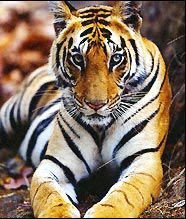
Hamas

sabaha anNamiru fil nahri

Namir sedang membersih

Tok Guru Mualimul_Mursyid

An_Namiru
.jpg)
Namir_istirehat
.jpg)
SaaRa AnNamiru fil_Midan
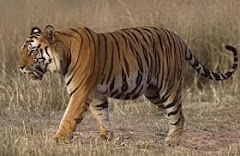.jpg)
Renungan Sang Harimau_Sabaha AnNamiru
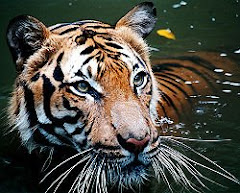.jpg)
Syaraba AnNamiru Ma_A
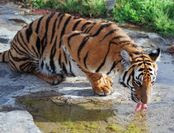.jpg)
AnNamiru_Riadhah
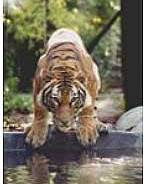.jpg)
AnNamiru_Riadhah
.jpg)
AnNimru ma_A waladuha
Namir fil_Ghabi (sebut Robi...
Namir

AdDubbu_Beruang di hutan

Amu Syahidan Wa La Tuba lil_A'duwwi

AsSyahid

Namir

Tangkas
najwa dan irah

sungai

najwa

najwa

Kaabatul musyarrafah

unta

Jabal Rahmah

masjid nabawi

masjid quba

dr.eg

najwa dan hadhirah

along[macho]
![along[macho]](https://blogger.googleusercontent.com/img/b/R29vZ2xl/AVvXsEjuMi7D33CmR0_KXrCW2XigfLcUuQurcvtqOS139ncCwEzCyB-jUopk7QK7anADIenJEm2S0N6gAY1ubnACYXewgiAsI3rBjnLTawM39alLL-rEopOoVqn0w5WpLhPJH3hrXNtchEhgtyaI/s240/P7150023.JPG)
harissa dan hadhirah

adik beradik
Tongkat Ali

Tongkat Ali
herba kacip Fatimah
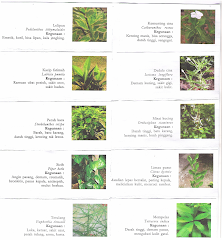
herba Kacip Fatimah
hempedu beruang

hempedu beruang
hempedu bumi

hempedu bumi
herba misai kucing

herba misai kucing
herba tongkat Ali
.png)
Tongkat Ali
Ulama'

Ulama'
kapal terbang milik kerajaan negara ini yang dipakai pemimpin negara

kapal terbang
Adakah Insan ini Syahid

Syahid
Tok Ayah Haji Ismail

Saifuddin bersama Zakaria

Dinner....
Sukacita Kedatangan Tetamu
Pengikut
Kalimah Yang Baik

Ubi Jaga

Ubi Jaga
Arkib Blog
Burung Lang Rajawali

Chinese Sparrowhawk
Kelicap Mayang Kelapa
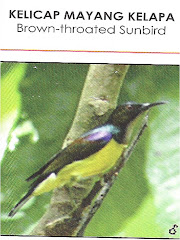
Brown-Throated Sunbird
Kopiah

Pokok Damar Minyak

Kacip Fatimah
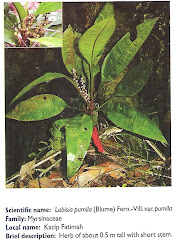
Mengkudu Akar



